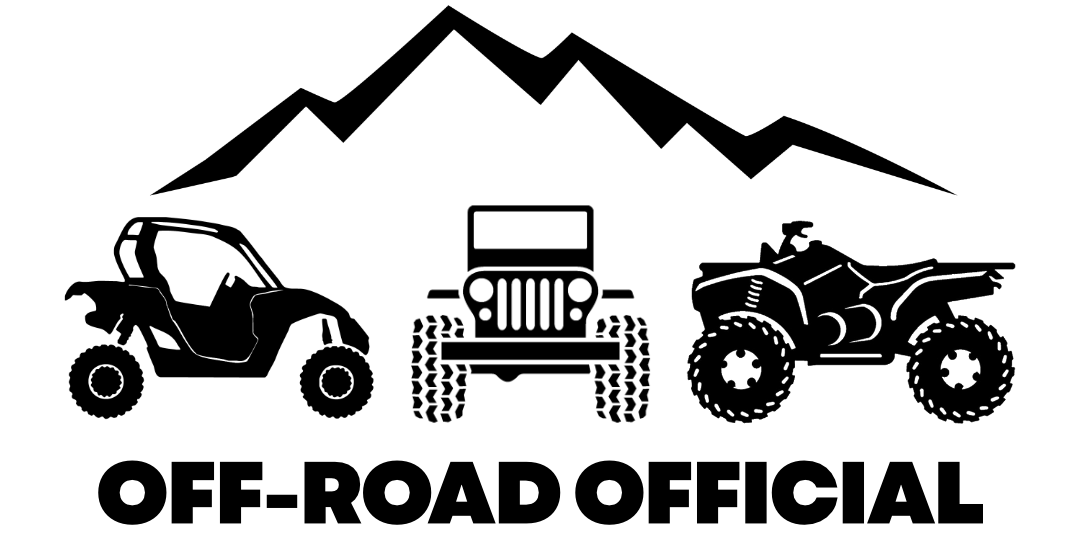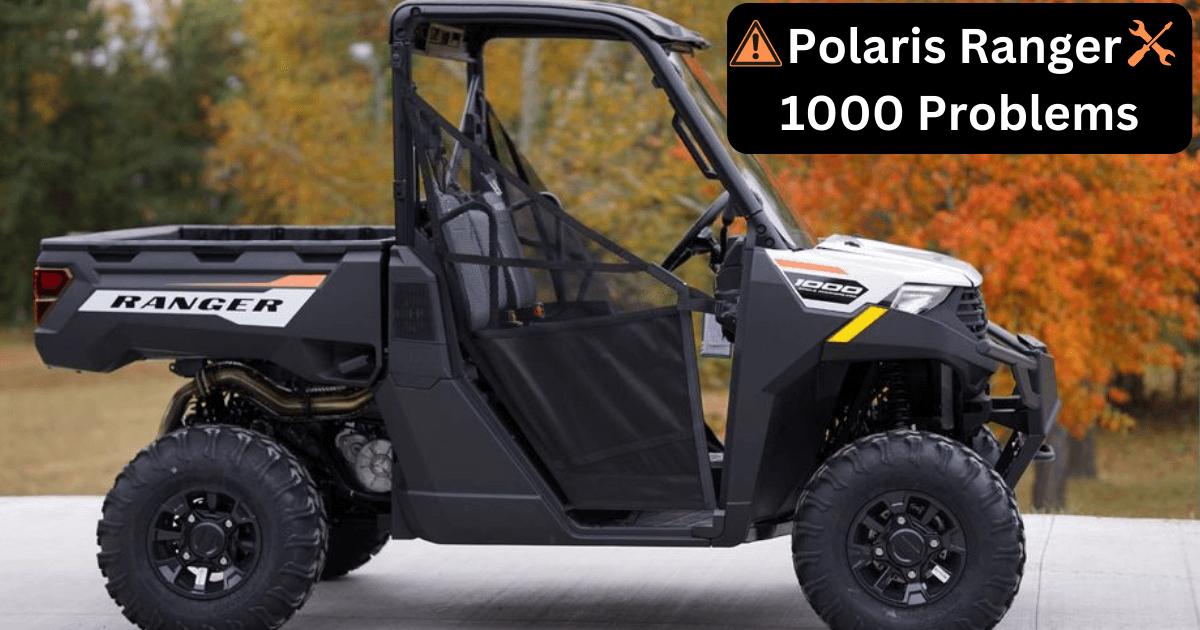As the go-to UTV for many farmers, ranchers, and outdoor enthusiasts, the Polaris Ranger 1000 is considered by many to be one of the best all-around utility vehicles across the industry.
Not only does this model offer some of the best engine power you can find, it’s also one of the fastest utility UTVs out there.
But despite its many positive traits, owners are quick to point out some common Polaris Ranger 1000 problems that trouble this model.
The six most common issues you may encounter with this model are:
- Clutch problems
- Alignment issues
- Shifting problems
- Clunking and rattling from faulty U-Joints
- Knocking noise when starting the engine
- Engine overheating
Some of these same problems also affect the Polaris Ranger 570 and the Polaris Ranger XP 900.
Clutch Problems
Polaris Ranger 1000 clutch problems are the most common recurring issue in this UTV.
A review of the Polaris Ranger 570 shows that Polaris recently made some upgrades that minimize the clutch issues in all new Polaris models, but they do flare up in pre-2022 models.
Faulty Clutch Symptoms
If your Ranger begins to suffer from the dreaded Polaris clutch problem, you’ll experience at least one of the following symptoms:
- Excessive clutch drag, which creates hard shifting in and out of gear.
- A screaming or whining noise when idling, along with the sound of the clutch starting to turn faster and faster, like it’s trying to engage but slipping the belt.
- Belt slippage that causes the vehicle to want to take off any time the brake is not engaged, even without any pressure applied to the gas.
- The RPMs dropping suddenly at higher speeds.
- The vehicle popping out of gear randomly.
All of these are symptoms of a faulty clutch, which will eventually lead to premature clutch failure in the Ranger 1000.
Causes of Clutch Issues
For the numerous owners who have experienced these symptoms of a failing clutch, the cause likely boils down to an issue with the spyder rollers, an alignment issue, or the EBS bearing.
Spyder Rollers
Initially, the spyder rollers in the clutch were one of the main causes of these issues, with the metal polymer bushings inside the spyders prone to failure.
Failure of the spyders resulted in the clutch not fully opening and the belts rubbing against one or both sides of the clutch.
Polaris recognized this flaw and made an upgrade to teflon fiber bushings in the spyder assembly, which has seemed to result in them failing less often.
EBS Bearing
The most common cause of the failing clutch in the Ranger 1000 originates with the engine braking system’s one-way bearing.
This bearing includes a plastic helix cam mechanism, and together these two components work together to grip the drive belt and slow the machine down or keep it from moving forward without applying the gas.
The plastic helix component is prone to becoming damaged or worn rather easily, especially from a buildup of dust and grime in the clutch.
When it malfunctions, the result is usually excessive belt drag or slippage and the vehicle tending to take off when going into gear.
While some owners have replaced this one-way bearing with a Gilomen two-way bearing that seems to solve this issue, many times enough damage has been caused that the only remedy is replacing the entire clutch system.
Replacing the Clutch
Polaris has taken steps to address the issues with their faulty clutches in recent years, and while the quality has improved, they do still tend to cause problems.
This causes frustration among owners who have their clutches replaced under warranty, only to encounter similar issues in the future.
As a result, many owners have resorted to replacing their stock clutch with an upgraded aftermarket clutch system.
Two of the most highly recommended are those clutch systems from Gilomen and Duraclutch.
Prevent A Failing Clutch
Idling for extended periods is known to cause the EBS bearing to wear out over time and leads to failure.
To prevent this, a best practice is for owners to simply shut off their machine rather than letting it sit and idle for prolonged periods of time.
Additionally, it is recommended that owners clean their clutch system by blowing out both the primary and secondary clutches with a compressor around every 500 miles.
Grit and grime buildup in clutches will occur regardless of where or how owners drive their vehicle. This buildup will cause excessive wear on the clutch if not removed.
Multiple mechanics have confirmed that doing this will prolong the life of your clutch.
Alignment Issues
The Polaris Ranger XP 1000 is known to have alignment issues, even straight from dealers.
If you are experiencing screaming or whining noises while driving or idling, check to ensure the belt is centered and aligned correctly.
If not, it will tend to rub up on the side of the clutch which will result in these noises and can keep the Ranger from reaching its top speed.
If the belt is centered correctly and these noises are present, you can be pretty certain you have an issue with your EBS bearing.
Shifting Problems – Gears Grinding
Another common problem with the Ranger 1000 is the tendency for the gears to grind when shifting into gear from a stopped position.
It happens when shifting to a Forward gear, but happens more often when going into Reverse.
This grinding is common and also affects models like the Can Am Defender, but it’s definitely not normal and can damage your drivetrain over time.
The most common cause of this grinding is the shift cable, which likely needs to be adjusted.
To do this, locate the shift cable and be sure the front nut holding it in place is tightened properly. Tightening it another turn or two either way is recommended to see if it will eliminate the grinding noise.
If adjusting the cable does not work, you may want to consider adding a gated shifter to your machine, which has put an end to this grinding for a number of owners.
For a more temporary solution before you can attempt either of the fixes above, jiggle the gear shift when changing gears while simultaneously giving the machine just a little gas.
This should help eliminate the grinding.
Clunking from Faulty U-Joints
The prop shaft U-Joints in the Ranger 1000 are prone to going bad and loosening up, leading to a clunking and rattling noise that comes from the underside of the UTV.
The stock U-Joints have a tendency to fail after a certain amount of miles and cause this issue, which is exasperated by the fact that they don’t have any zerk fittings to be greased.
This leads to them being quite noisy and having a shorter lifespan than they should.
This problem tends to affect models made before 2020, as Polaris has taken steps to fix it in 2020+ Rangers by doing away with U-Joints in favor of CV Joints.
If you’ve got a 2019 or earlier Ranger 1000, you should replace the U-Joints with upgraded ones to solve this problem. With the right tools it’s not that complicated, but you may want to have your dealer handle it.
Be sure that the new U-Joints you install or have installed contain zerk fittings so they can be greased.
Spicer U-Joints are highly recommended in this scenario, but auto parts stores like Napa and TRW sell U-Joints that work just fine as well.
Knocking Noise After Starting
Unfortunately clunking and rattling aren’t the only noises that may alarm you with the Ranger 1000.
As an owner, there’s a decent chance at some point you’ll hear a loud knocking noise that goes on for between three to five seconds when you start your UTV.
This noise is common and actually completely normal, but it doesn’t always sound that way.
The knocking noise happens thanks to the cam chain tensioner in these vehicles, which is supposed to ensure the timing chain has the right amount of tension needed.
This cam chain tensioner is hydraulic and takes a short time to pump up when you start your Ranger, which is where the knocking noise originates.
Again, completely normal. But for those who want to rid their Ranger of the noise, you’ll need to replace the stock tensioner with a mechanical tensioner like the Tusk Tensioner, which will eliminate the knocking.
Overheating
The ProStar engines in Polaris Rangers are some of the highest quality among the industry and have come a long way since older models like the Ranger XP 700, but they do have some negatives.
One of those it that they’re prone to overheating, which can occur for a few reasons:
- Faulty Radiator Cap
- Clogged Radiator
- Temperature Sensor
- Air Blockage in Coolant System
- Blown Head Gasket
Faulty Radiator Cap
The stock radiator caps in the Ranger 1000 models are prone to failing and not fitting correctly over time.
If this happens to your vehicle, you’re probably going to find yourself replacing the coolant often because it will leak out.
If you find that you often have a sudden loss of coolant in your Ranger, the radiator cap should be your first suspect as to why.
This loss of coolant will lead to overheating if you’re not keeping an eye on it, but replacing the radiator cap should solve the problem.
A simple replacement radiator cap from an auto parts store will usually do the trick.
Clogged Radiator
The Ranger 1000 makes light work of most trails and off-road terrain, but this kind of driving tends to lead to the radiator becoming caked with mud, sand, or grass over time.
You need to be sure and clean your radiator fins often to avoid this happening and your engine overheating, especially after rides through mud or puddles.
If you’ve got mud layered on pretty good, you may want to remove the grill and soak it in Simple Green cleaner, then spray it out with a hose and reinstall.
Temperature Sensor
The main cause of overheating in the Ranger 1000 is due to the ECU being programmed so that the fan doesn’t engage until the engine reaches temps of close to 220 degrees.
That leaves the fan very little time to be able to cool the engine, so the temp may continue to climb into the 230 to 250 degrees range at which point it will overheat.
This is especially problematic in higher elevations or during the warmest summer days.
To fix this, your best bet is to have your ECU tuned. An ECU tune generally includes a reprogramming of the fan to engage at lower temps of around 190 degrees, so the engine usually never has a chance to reach overheating temps.
You can also run a toggle switch directly to your fan, so that you can have access to turn on the fan via this switch on the dash whenever you want.
Airlock In Coolant System
An air pocket forming in your coolant system is another of the main reasons the Ranger 1000 will overheat.
Any time your engine is close to overheating or actually overheats, you’re at risk of an air pocket forming.
If this happens, the air will block coolant from being properly pumped, which leads to overheating.
The only way to fix this is to bleed the air from your coolant system, and your Ranger will continue to overheat until you do.
Blown Head Gasket
Any time your engine overheats, your head gaskets are at risk of blowing.
When a head gasket goes, it will lead to recurring overheating until replaced with a functional one.
A sign of a blown head gasket is bubbling that won’t subside from your coolant reservoir if you’re bleeding the air from your system.
A head gasket test kit will can confirm this for you so you can make a replacement if needed.
Conclusion
The Ranger 1000 is no doubt one of the best overall UTV models available these days.
But even the best of the best will have their issues, and these common issues prove that the Ranger 1000 is no different.
For the next great Polaris Ranger, take a look at the new Polaris Ranger 1500 before you go.


